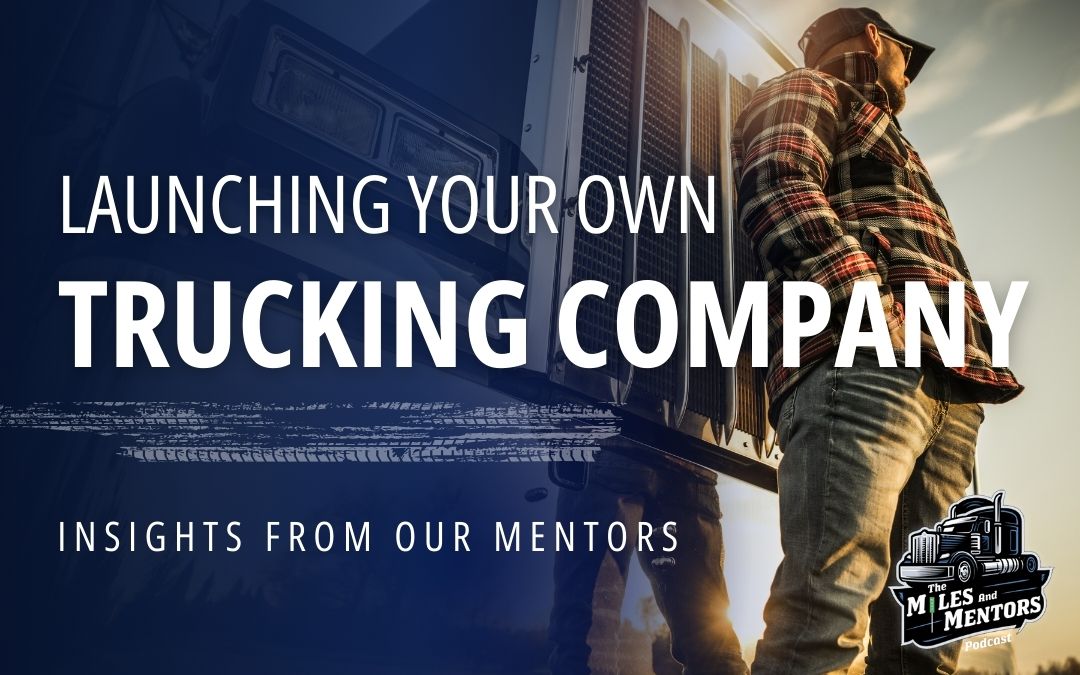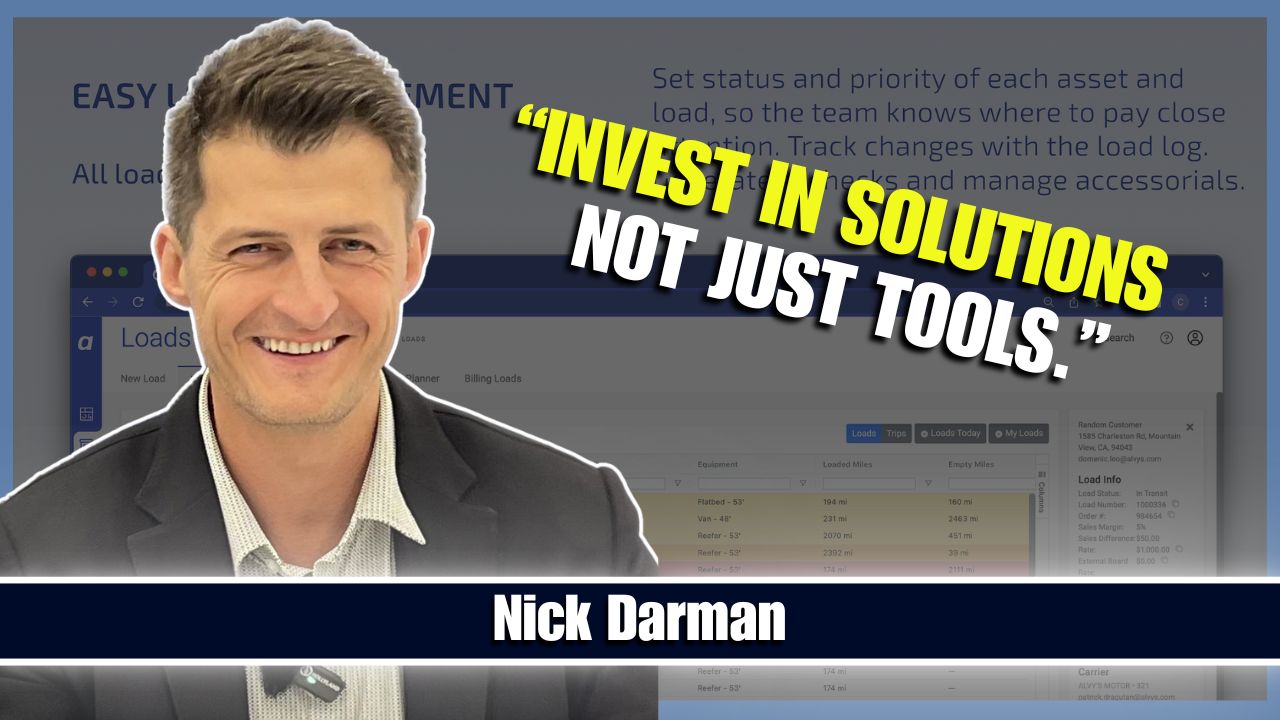Starting a trucking company offers a path to independence and long-term success in an industry that moves the backbone of the economy. But the road from idea to operation is filled with decisions, regulations, and financial commitments. With insights from Alex Snook, co-owner of Presidential Trucking and CEO of OnSight, this guide outlines every critical step for aspiring trucking entrepreneurs who want to start a trucking company and build a profitable trucking business.
Understanding the Trucking Industry Landscape
Overview of the Trucking Industry
The trucking industry is a foundational part of the U.S. economy, moving over 70% of all domestic freight. It connects manufacturers, warehouses, retailers, and end consumers across the country. For entrepreneurs, starting a trucking business presents an opportunity to enter a high-demand field with room for growth. However, success requires understanding the industry’s complexities, including operational costs, safety requirements, and economic trends.
Types of Trucking Services
New operators need to consider whether they want to focus on local, regional, or long-haul freight. Each comes with unique equipment needs, scheduling demands, and profit margins. Specialized freight such as hazardous materials, refrigerated goods, or oversized loads may offer higher payouts but also require additional licensing and insurance.
Industry Trends
The industry is evolving through the adoption of digital load boards, electronic logging devices (ELDs), and data-driven route optimization. At the same time, challenges like freight fraud, driver shortages, and fuel volatility are pushing companies to become more resilient. Alex Snook’s experience with a stolen load was the catalyst for launching OnSight, a tech platform designed to verify drivers and prevent fraud at shipping docks.
Identifying Your Niche in the Trucking Market
Identifying your niche is one of the most important early steps in starting a trucking company. Alex Snook began his journey by managing intermodal loads in Kansas City before moving into asset-based trucking with a localized focus.
Start by researching the freight needs in your area. Talk to local businesses, analyze load boards like Amazon Relay Load Board, and understand which types of freight are underserved. Local delivery might require fewer regulatory hurdles but yields smaller profit margins, while long-haul lanes offer more volume with greater costs and risk. Specializing in specific freight types such as auto parts, retail goods, or temperature-controlled cargo can also help you build a clear brand and customer base.
Once you’ve identified your niche, define your target customers and service range. Will you focus on direct contracts with shippers or work through brokers? Will you prioritize volume or premium service lanes? These choices will shape your operations, fleet, and financial model. Choosing the right niche early on is key to starting trucking with a clear direction.
Developing a Business Plan for Your Trucking Company
A detailed business plan is essential for launching and sustaining a trucking business. Investors, banks, and even partners will want to see that you’ve thought through every aspect of your operation.
Executive Summary and Objectives
Describe your company’s mission, the services you offer, and your short- and long-term business goals. Be clear about how your trucking company will stand out.
Market Analysis
Include competitor research, demand forecasts, and trends. Use data to back up your choice of niche and service model. This step is especially important when starting trucking to ensure you’re not entering an oversaturated segment.
Operational Plan
Map out your expected routes, fleet size, maintenance schedule, and compliance process. This is where many new trucking business owners fall short. Alex Snook emphasized the need to understand every moving part of the operation before hiring or expanding.
Financial Projections
Calculate startup costs, monthly operational expenses, break-even points, and expected revenue. Plan for variable costs like fuel and repairs. Investors will expect a detailed roadmap showing profitability timelines and risk buffers. This level of planning is essential for anyone starting trucking company operations from the ground up.
Setting Up Your Business Structure
Legal Formation
Decide whether to operate as a sole proprietorship, limited liability company (LLC), or corporation. Most owner-operators choose LLCs for tax flexibility and personal asset protection. When starting a trucking business, an LLC is often the simplest and most efficient legal structure.
Registration and Tax Setup
Register your business with your state, and apply for an Employer Identification Number (EIN) through the IRS. This number is used to open your business bank account and for tax filing.
Business Bank Account
Separate your personal and business finances. A dedicated business bank account helps you manage cash flow, track expenses, and appear professional to brokers and partners. This is a small but crucial step when starting trucking company finances.
Securing Financing for Your Trucking Company
Starting a trucking business can cost anywhere from $10,000 to over $100,000 depending on your scale. Alex Snook funded his business using a mix of personal capital and investment partners.
Funding Sources
Traditional business loans from banks or credit unions are a common option, but not always accessible to first-time owners. Equipment leasing allows you to get started with lower upfront costs. Accounts receivable factoring companies help maintain cash flow by advancing payment on unpaid invoices. SBA loans and grants can also provide support when starting trucking business operations on a limited budget.
Start-Up Budget Breakdown
Truck purchase or lease is the largest line item, ranging from $30,000 to $80,000. Permits and licenses often cost between $1,000 and $2,500, depending on your location. Insurance coverage is critical and ranges from $5,000 to $10,000 per year. ELD and tracking systems average $500 to $1,500. Set aside at least $5,000 for emergency maintenance. Understanding these numbers helps you realistically plan when you start trucking.
Plan for at least 3 months of operating expenses to avoid an early cash flow crisis.
Navigating Regulatory Compliance and Permits
FMCSA and DOT Requirements
To operate legally, you must register with the Federal Motor Carrier Safety Administration and obtain a U.S. DOT Number. If you plan to haul freight across state lines, you also need an MC Number. This is one of the first tasks to complete when starting trucking company paperwork.
BOC-3 and Insurance
You’ll need to file a BOC-3 form designating your legal agent and submit proof of liability and cargo insurance. Alex noted that delays in these filings can hold up operations for weeks, so build extra time into your launch plan.
State Permits and Compliance
Some states require International Registration Plan (IRP) plates or International Fuel Tax Agreement (IFTA) registration. Make sure your company is compliant on both federal and state levels. These are non-negotiable steps for anyone serious about starting a trucking business.
Building Your Fleet and Operations
Selecting the Right Equipment
Whether you buy new or used, choose equipment that fits your freight type, route distance, and maintenance capacity. Alex recommends building relationships with local mechanics before breakdowns happen and researching reliability across truck brands.
Hiring Drivers
If you’re not driving yourself, be clear on the type of drivers you need. Require clean driving records, DOT medical cards, and experience with your specific type of freight. Offer fair pay structures and flexible scheduling to boost retention. For many starting trucking companies, finding and keeping the right drivers is the first major challenge.
Operational Infrastructure
Invest in software that tracks loads, hours of service, and fuel efficiency. Route planning tools, digital BOLs, and document scanning apps can save time and reduce errors. OnSight, the platform Alex founded, helps automate check-ins and prevent fraud.
Marketing Your Trucking Company
Branding Your Business
Choose a company name that reflects your service and is easy to remember. Design a professional logo and develop a tagline that communicates reliability and specialization. These foundational steps are part of every successful start trucking company plan.
Finding Customers
Start by contacting local manufacturers or distributors who may need freight services. Use load boards like DAT or Truckstop to find work in early stages. Alex used LinkedIn networking to build early traction in Kansas City. Building these initial relationships is critical to start trucking and building trust quickly.
Sustaining and Growing Your Trucking Business
Performance Management
Track your company’s key performance indicators (KPIs) such as cost per mile, fuel spend, and on-time delivery rate. Use basic accounting and mileage tracking tools to monitor your costs, stay compliant, and make smart decisions about fuel use, load profitability, and maintenance scheduling.
Scaling Up
As you grow, consider adding more trucks, hiring a dispatcher, or expanding into new lanes. Alex’s strategy involves layering software solutions with physical fleet expansion to stay lean and scalable.
Building a Team and Culture
Recruit people who share your values. Drivers, dispatchers, and mechanics all play a role in your reputation. A positive work environment helps with retention and service quality. Culture matters more than many expect when starting trucking business teams.
Frequently Asked Questions
What do I need to start a trucking company?
You’ll need a business plan, legal registration, a USDOT and MC Number, insurance, startup capital, and a truck. Depending on your model, you may also need drivers, dispatch software, and maintenance vendors.
How much money do I need to start a trucking business?
Startup costs vary widely but range from $10,000 to $100,000. Costs include equipment, insurance, permits, software, and emergency funds.
Do I need a CDL to start a trucking company?
No. You can hire CDL-licensed drivers while you manage operations. However, many owner-operators start by driving themselves.
What licenses and permits are required?
At minimum, you’ll need a USDOT number, MC authority, BOC-3 filing, and proof of insurance. Some states require IRP and IFTA registration.
What is a business bank account and why is it important?
A business bank account separates your personal and business finances. It improves tax tracking, boosts your professionalism, and is often required by lenders and brokers.
Ready to Launch Your Trucking Company? Start Smart, Scale Strong
Starting a trucking company involves more than buying a truck and hitting the road. It requires careful planning, strong partnerships, regulatory knowledge, and operational discipline. Entrepreneurs like Alex Snook prove that with the right foundation and a willingness to solve real problems, it’s possible to succeed in both trucking and freight tech.
By following these essential steps, you’ll be better prepared to launch a successful and sustainable trucking business. Whether you’re starting a trucking company from scratch or scaling an existing operation, this guide can help you start trucking the smart way.



